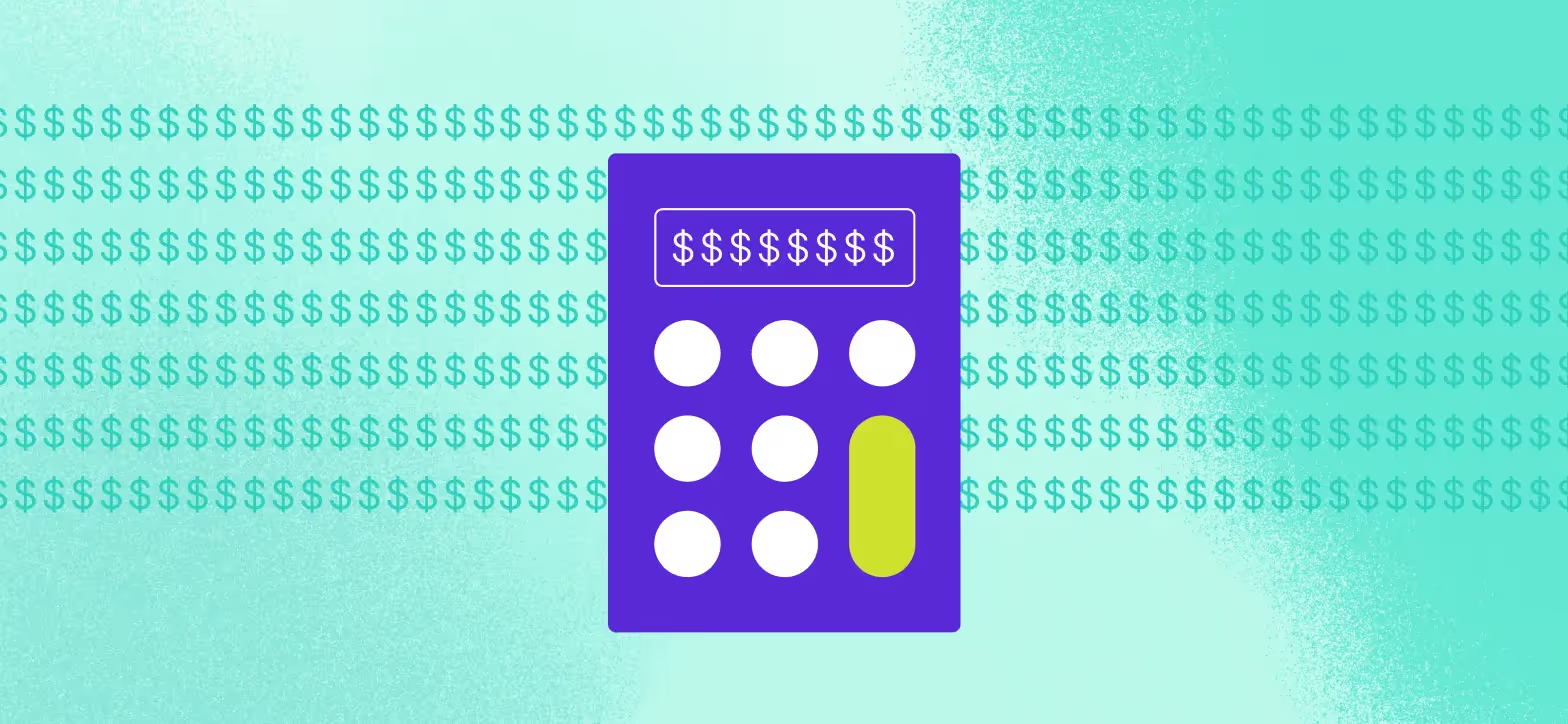Planning season is here again - and it's not getting any easier. Between year-end close, board prep, and next quarter's plan, timelines are tighter, expectations are higher, and your spreadsheet tabs are multiplying.
The good news? You don't have to do it alone.
These five ChatGPT prompts are designed specifically for finance and FP&A leaders who want to speed up financial planning without losing quality. Each one helps you cut through the noise, align leadership, and make better, faster decisions - all while saving hours on manual prep work.
Just copy, paste, and customize the prompts (areas in [brackets]) with your company's context - goals, targets, challenges, or metrics - to get tailored, CFO-ready outputs.
Looking for procurement-specific prompts? Check out our AI Procurement Prompts guide for 12 ready-to-use ChatGPT prompts tailored to sourcing, vendor management, and spend optimization.
1. Strategic Priority Framework
Use Case: Clarifying priorities, aligning leadership, deciding where to invest
Before you get into numbers, get clear on what actually matters. Great plans start with alignment on goals, trade-offs, and the bets that will drive growth in the coming months. This prompt helps your team zoom out just enough to align on what success should look like across the first half of 2026 - before diving into the quarter-by-quarter details.
Prompt:
Act as a strategic planning consultant and operating advisor with deep experience in [your company's type, size, and stage].
Here's what you should know about us: [describe your goals, metrics, challenges, and any other relevant context such as revenue, burn, team size, focus areas, and key 2026 objectives].
Use this context to develop a leadership-alignment framework for prioritizing [Company Name]'s H1 2026 initiatives. Write in a concise, unbiased, consultant-style tone suitable for a board or executive audience.
Provide:
- A 2-bucket categorization model: Define and illustrate "Run the Business" vs. "Trajectory-Changing Bets." Include 4-6 concrete examples per bucket relevant to our size and maturity.
- 3-5 prioritization criteria that evaluate both impact [insert objective/goals here to ensure results align to your strategy - e.g., ARR, NRR, margin, burn multiple] and feasibility of execution [e.g., confidence, time-to-impact, resources needed, etc.]
- A simple impact/effort scoring model for leadership alignment
- 3 strategic-fit questions to test each initiative before funding (the "go/no-go" gates).
- A short summary table showing how this framework helps [company name] balance [objectives and goals]
Use clear headings and tables where helpful and include brief reasoning (why it matters for our stage and metrics) behind each component to improve adoption. Include suggestions on how to visualize this framework in Notion, Miro, or a planning deck for recurring use.
2. Revenue and Expense Gap and Leakage Analysis
Use Case: Identifying gaps, spotting waste, and surfacing levers to improve plan performance
Every planning cycle reveals mismatches between targets, forecasts, and results. But not all shortfalls are true gaps. Some come from hidden leakages - inefficiencies, underutilized investments, or process waste that quietly erode performance. This prompt helps you see the full picture and create a data-driven action plan for tightening execution.
Prompt:
Act as an FP&A leader who uses a rigorous, data-informed approach to deliver CFO-ready gap analyses and has experience supporting [your company's type, size, and stage].
Here's what you should know about us: [summarize H1 2026 targets, projections, and relevant historical performance data you want taken into consideration].
- Break down the gap between our top-down H1 2026 targets and bottom-up forecast
- Identify common or potential areas of leakage (e.g., low utilization, delayed ramp, pricing erosion, unused budgets, etc.)
- Highlight 5-7 levers we could pull to close gaps or improve efficiency
- Flag assumptions that may be overly optimistic or conservative
- Recommend how to align expense pacing with revised revenue expectations
Begin with a short executive summary (3-5 bullet points). Then summarize findings in a table with the following columns: Gap Type, Root Cause, Leakage/Lever Identified, Recommended Action, Estimated Impact and Confidence level.
Include reasoning for each insight and close with 3-5 actionable next steps to operationalize findings for the next forecast cycle.
3. Scenario Planning (Bookings) and Sensitivity Analysis
Use Case: Preparing for uncertainty, forecasting with confidence
Markets shift and deals slip. The best plans account for what could change. This prompt helps you pressure-test new business growth assumptions and stay ready.
Prompt:
Act as a finance strategy advisor, using CFO-ready, analytical, and concise tone. Build three Q1 2026 bookings scenarios - Conservative, Base, and Aggressive - using these inputs:
- Pipeline coverage [Show the ratio of your total pipeline value to your bookings or revenue target]
- Win rate [add the percentage of qualified opportunities that convert into closed-won deals]
- Average deal size: [average size of your won deals]
- Current AE headcount: [ ]
- Ramping AEs: [ ]
- Pipeline generation rate [How much new pipeline is created each quarter from all sources]
For each scenario, provide:
- Expected total bookings and the key driver assumptions (e.g., conversion rate, pipeline size, ramp timing, deal size growth).
- Headcount and budget requirements (hiring, enablement, marketing investment, etc.) to support each case.
- 3-5 levers that most influence results (examples: win rate, pipeline quality, AE productivity, ramp time, sales cycle length).
- Early indicators that signal which scenario we're trending toward (e.g., pipeline creation velocity, opportunity-to-meeting ratio, ramp attainment).
- Recommended actions to (a) protect the Base case, (b) close the gap to the Aggressive case, and (c) mitigate downside in the Conservative case.
For the final deliverables, please:
- Start with a concise executive summary outlining key differences across scenarios.
- Build a comparison table showing: Bookings, AE Headcount, Budget Level, Key Risks & Dependencies, Sensitivity Driver, Confidence Level.
- End with a short paragraph explaining the rationale behind each scenario's assumptions.
- Suggest how to visualize the output (e.g., waterfall or tornado chart for sensitivity analysis).
4. Stakeholder Alignment and Communication
Use Case: Gaining buy-in, building board decks, securing clarity across teams
Even the best strategy will stall without alignment. Plans succeed when people understand the "why" behind the numbers and see how their work connects to the bigger picture. This prompt helps you translate complex plans into clear, motivating narratives for every audience.
Prompt:
Act as an executive communications strategist with experience translating complex strategic plans into clear, audience-specific narratives.
Context:
- Plan summary: [paste a short overview of your plan]
- Key audiences: [Board, leadership team, department heads, etc.]
- Known sensitivities or challenges: [describe if applicable]
- Communication goals: [approval, alignment, motivation, clarity]
Using this information:
- Draft a one-page summary for the Board highlighting key bets, outcomes, and risks
- Create 5-7 leadership talking points that reinforce priorities across departments
- Identify 5 likely objections or questions from department heads with short, confident responses
- Recommend communication channels and timing (e.g., Board memo, leadership sync, all-hands deck)
Output guidelines:
- Use clear headings per audience.
- Keep each section ≤200 words or 5 bullets. (Tailor this based on desired depth.)
- Write in executive-ready language:
- Board: strategic and outcome-focused
- Leadership: confident and action-oriented
- Departments: transparent, motivating, and practical
5. Procurement Transformation Roadmap
Use Case: Modernizing procurement, improving visibility, integrating automation and AI
Once the plan is set, the next challenge is scale. Modern procurement isn't just about cost savings - it's about helping the business move faster. This prompt helps you design a roadmap that ties people, process, and technology together while showing where AI can make the biggest impact.
Prompt:
Act as a procurement transformation consultant. Create a 12-month roadmap to modernize procurement across sourcing, intake, and vendor management.
Context (optional but recommended):
- Current tools and systems: [list tools and workflows currently in use]
- Key pain points: [describe current inefficiencies or challenges]
- Strategic goals for the next year: [list priorities like speed, compliance, visibility]
- Involved departments: [list who participates or needs to be enabled]
- Budget or resource constraints: [note any limitations if applicable]
Include:
- Key milestones and implementation phases for each procurement area
- Recommended technology and tools to evaluate for automation (for example, AI-driven intake, spend analytics, supplier intelligence, or contract lifecycle management platforms)
- Practical ways to embed AI into workflows, such as vendor due diligence, renewal tracking, spend categorization, and risk alerts
- A cross-functional enablement and change management plan that outlines how to educate, train, and gain adoption from departments such as Marketing, Ops, Finance, Legal, Security, and IT
- Success metrics and KPIs for efficiency, adoption, and savings impact
Format:
- Present as a phased roadmap (Q1-Q4) table including columns for: Phase, Goals, Key Actions, Tools/AI Use Cases, Department Owners, KPIs, Rationale.
- Precede with a short Executive Summary (3-5 bullet points) highlighting transformation objectives and ROI potential.
- Tone: Strategic, concise, and executive-ready - suitable for inclusion in a Board or leadership transformation plan.
Cheat Code: Get Better AI Outputs Faster
Sometimes, even when prompts are laid out for you, it can feel like a lot of work to manually fill in every [bracket] yourself. As an alternative, you can drop in the generic prompts from above with a brief overview of your company and ask AI to refine the generic prompt using your company's context, metrics, and goals.
Example:
We are a 250-person, PE-backed B2B software company doing ~$60M in revenue. Our OKRs focus on margin expansion, GTM efficiency, and data unification. Please refine the generic prompt above so it fits our stage, metrics, and planning style. Use best-practice prompt engineering techniques (role, constraints, success criteria, examples, and output format) to maximize relevance and clarity.
That combination - your context plus the prompt - produces the most complete, relevant, and executive-ready output.
Let’s Work Smarter, Not Harder
Planning season always feels like a sprint and a marathon at the same time. The deadlines don't move, but the data, priorities, and assumptions always do.
Imagine large language models (LLMs) like ChatGPT as your planning partner to navigate this season with much more ease.
Tropic helps finance teams uncover how much they're overpaying for software so you can reallocate those dollars toward strategic priorities instead of wasteful spend.
Related blogs
Discover why hundreds of companies choose Tropic to gain visibility and control of their spend.




.avif)


